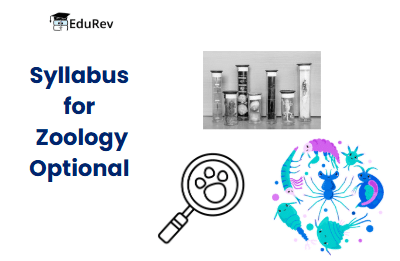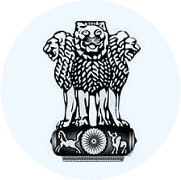UPSC Exam > UPSC Notes > Zoology Optional Notes for UPSC > UPSC Optional Subject Syllabus: Zoology
UPSC Optional Subject Syllabus: Zoology | Zoology Optional Notes for UPSC PDF Download
| Table of contents |

|
| Why Choose Zoology as an Optional Subject? |

|
| Paper - I |

|
| Paper - II |

|
| Preparation Tips for Zoology Optional |

|
Zoology is a comprehensive and scientific optional subject for the UPSC Civil Services Examination, focusing on the study of animal biology, ecology, genetics, and physiology. It is an ideal choice for candidates with a background in biological sciences, offering a structured syllabus that integrates theoretical and applied aspects. The subject’s relevance to environmental issues, biodiversity, and biotechnology aligns with General Studies Paper III, enhancing its utility. With clear concepts and diagram-based answers, Zoology has high scoring potential.
Why Choose Zoology as an Optional Subject?
- Scientific and Objective: The syllabus is well-defined and scientific, allowing for precise, fact-based answers that can fetch high marks.
- Overlap with General Studies: Topics like ecology, biodiversity, and environmental issues overlap with GS Paper III, reducing preparation time.
- Scoring Potential: Use of diagrams, flowcharts, and structured answers enhances clarity and scoring in exams.
- Relevance to Current Issues: Covers contemporary topics like wildlife conservation, biotechnology, and environmental degradation, useful for essays and interviews.
- Interest for Science Students: Engaging for candidates with a biology background, with a mix of theoretical and applied concepts.
- Resource Availability: Standard textbooks, NCERTs, and coaching materials are widely available for thorough preparation.
Paper - I
1. Non-chordata and Chordata
- Classification and relationship of various phyla up to subclasses: Acoelomate and Coelomate, Protostomes and Deuterostomes, Bilateria and Radiata
- Status of Protista, Parazoa, Onychophora, and Hemichordata; Symmetry
- Protozoa: Locomotion, nutrition, reproduction, sex; General features and life history of Paramaecium, Monocystis, Plasmodium, and Leishmania
- Porifera: Skeleton, canal system, and reproduction
- Cnidaria: Polymorphism, defensive structures and their mechanism; coral reefs and their formation; metagenesis; general features and life history of Obelia and Aurelia
- Ctenophora
- Platyhelminthes: Parasitic adaptation; general features and life history of Fasciola and Taenia and their pathogenic symptoms
- Nemathelminthes: General features, life history, parasitic adaptation of Ascaris and Wuchereria
- Aschelminthes
- Annelida: Coelom and metamerism; modes of life in polychaetes; general features and life history of Nereis, earthworm, and leech
- Arthropoda: Larval forms and parasitism in Crustacea; vision and respiration in arthropods (Prawn, cockroach, and scorpion); modification of mouth parts in insects (cockroach, mosquito, housefly, honey bee, and butterfly); metamorphosis in insects and its hormonal regulation, social behaviour of Apis and termites
- Mollusca: Feeding, respiration, locomotion, general features and life history of Lamellidens, Pila, and Sepia, torsion and detorsion in gastropods
- Echinodermata: Feeding, respiration, locomotion, larval forms, general features and life history of Asterias
- Protochordata: Origin of chordates; general features and life history of Branchiostoma and Herdmania
- Phylum Chordata
- Pisces: Respiration, locomotion, and migration
- Amphibia: Origin of tetrapods, parental care, paedomorphosis
- Reptilia: Origin of reptiles, skull types, status of Sphenodon and crocodiles
- Aves: Origin of birds, flight adaptation, migration
- Mammalia: Origin of mammals, dentition, general features of egg-laying mammals, pouched-mammals, aquatic mammals, and primates, endocrine glands (pituitary, thyroid, parathyroid, adrenal, pancreas, gonads) and their interrelationships
- Comparative functional anatomy of various systems of vertebrates (integument and its derivatives, endoskeleton, locomotory organs, digestive system, respiratory system, circulatory system including heart and aortic arches, urino-genital system, brain and sense organs (eye and ear))
2. Ecology
- Biosphere: Concept of biosphere; biomes, biogeochemical cycles, human-induced changes in atmosphere including greenhouse effect, ecological succession, biomes, and ecotones, community ecology
- Concept of ecosystem; structure and function of ecosystem, types of ecosystem, ecological succession, ecological adaptation
- Population: Characteristics, population dynamics, population stabilization
- Biodiversity and diversity conservation of natural resources
- Wildlife of India
- Remote sensing for sustainable development
- Environmental biodegradation, pollution, and its impact on biosphere and its prevention
3. Ethology
- Behaviour: Sensory filtering, responsiveness, sign stimuli, learning and memory, instinct, habituation, conditioning, imprinting
- Role of hormones in drive; role of pheromones in alarm spreading; crypsis, predator detection, predator tactics, social hierarchies in primates, social organization in insects
- Orientation, navigation, homing, biological rhythms, biological clock, tidal, seasonal, and circadian rhythms
- Methods of studying animal behaviour including sexual conflict, selfishness, kinship, and altruism
4. Economic Zoology
- Apiculture, sericulture, lac culture, carp culture, pearl culture, prawn culture, vermiculture
- Major infectious and communicable diseases (malaria, filaria, tuberculosis, cholera, and AIDS) their vectors, pathogens, and prevention
- Cattle and livestock diseases, their pathogens (helminths) and vectors (ticks, mites, Tabanus, Stomoxys)
- Pests of sugarcane (Pyrilla perpusiella), oilseed (Achaea janata), and rice (Sitophilus oryzae)
- Transgenic animals
- Medical biotechnology, human genetic disease, and genetic counselling, gene therapy
- Forensic biotechnology
5. Biostatistics
- Designing of experiments; null hypothesis; correlation, regression, distribution, and measure of central tendency, chi-square, student t-test, F-test (one-way & two-way F-test)
6. Instrumentation Methods
- Spectrophotometer, phase contrast, and fluorescence microscopy, radioactive tracer, ultracentrifuge, gel electrophoresis, PCR, ELISA, FISH, and chromosome painting
- Electron microscopy (TEM, SEM)
Paper - II
1. Cell Biology
- Structure and function of cell and its organelles (nucleus, plasma membrane, mitochondria, Golgi bodies, endoplasmic reticulum, ribosomes, and lysosomes)
- Cell division (mitosis and meiosis), mitotic spindle and mitotic apparatus, chromosome movements
- Chromosome types: polytene and lampbrush, organization of chromatin, heterochromatin
- Cell cycle regulation
- Nucleic acid topology, DNA motif, DNA replication, transcription, RNA processing, translation, protein folding, and transport
2. Genetics
- Modern concept of gene, split gene, genetic regulation, genetic code
- Sex chromosomes and their evolution, sex determination in Drosophila and man
- Mendel’s laws of inheritance, recombination, linkage, multiple alleles, genetics of blood groups, pedigree analysis, hereditary diseases in man
- Mutations and mutagenesis
- Recombinant DNA technology; plasmid, cosmid, artificial chromosomes as vectors, transgenics, DNA cloning, and whole animal cloning (principles and methods)
- Gene regulation and expression in prokaryotes and eukaryotes
- Signal molecules, cell death, defects in signaling pathway, and consequences
- RFLP, RAPD, and AFLP and application of RFLP in DNA fingerprinting, ribozyme technologies, human genome project, genomics, and proteomics
3. Evolution
- Theories of origin of life
- Theories of evolution; Natural selection, role of mutations in evolution, evolutionary patterns, molecular drive, mimicry, variation, isolation, and speciation
- Evolution of horse, elephant, and man using fossil data
- Hardy-Weinberg Law
- Continental drift and distribution of animals
4. Systematics
- Zoological nomenclature, international code, cladistics, molecular taxonomy, and biodiversity
5. Biochemistry
- Structure and role of carbohydrates, fats, fatty acids, cholesterol, proteins, amino-acids, nucleic acids; Bioenergetics
- Glycolysis and Krebs cycle, oxidation and reduction, oxidative phosphorylation, energy conservation and release, ATP cycle, cyclic AMP – its structure and role
- Hormone classification (steroid and peptide hormones), biosynthesis, and functions
- Enzymes: types and mechanisms of action
- Vitamins and co-enzymes
- Immunoglobulin and immunity
6. Physiology (with special reference to mammals)
- Composition and constituents of blood; blood groups and Rh factor in man, factors and mechanism of coagulation, iron metabolism, acid-base balance, thermoregulation, anticoagulants
- Haemoglobin: Composition, types, and role in transport of oxygen and carbon dioxide
- Digestion and absorption: Role of salivary glands, liver, pancreas, and intestinal glands
- Excretion: Nephron and regulation of urine formation; osmo-regulation and excretory products
- Muscles: Types, mechanism of contraction of skeletal muscles, effects of exercise on muscles
- Neuron: Nerve impulse – its conduction and synaptic transmission, neurotransmitters
- Vision, hearing, and olfaction in man
- Physiology of reproduction, puberty, and menopause in humans
7. Developmental Biology
- Gametogenesis: Spermatogenesis, composition of semen, in vitro and in vivo capacitation of mammalian sperm, Oogenesis, totipotency
- Fertilization, morphogenesis, and morphogen, blastogenesis, establishment of body axes formation, fate map, gestation in frog and chick
- Genes in development in chick, homeotic genes, development of eye and heart, placenta in mammals
- Cell lineage, cell-to-cell interaction, genetic and induced teratogenesis, role of thyroxine in control of metamorphosis in amphibia, paedogenesis, and neoteny, cell death, aging
- Developmental genes in man, in vitro fertilization, and embryo transfer, cloning
- Stem cells: Sources, types, and their use in human welfare
- Biogenetic law
Preparation Tips for Zoology Optional
- Understand the Syllabus: Analyze the syllabus for Paper I and Paper II to prioritize high-weightage topics like Non-chordata, Chordata, Genetics, and Ecology.
- Refer to Standard Books: Use books like "Invertebrate Zoology" by R.L. Kotpal, "Vertebrate Zoology" by Jordan and Verma, "Genetics" by P.K. Gupta, and "Ecology" by P.D. Sharma for clarity.
- Use Diagrams Extensively: Practice drawing labeled diagrams for topics like animal anatomy, life cycles, and physiological processes to enhance answers.
- Link with Current Affairs: Relate topics like biodiversity, pollution, and wildlife conservation to recent environmental policies and reports.
- Practice Answer Writing: Write answers to previous years’ questions, focusing on concise explanations supported by diagrams and examples.
- Focus on Applied Topics: For Paper II, emphasize biotechnology, genetics, and physiology, integrating real-world applications like gene therapy and transgenic animals.
- Revise Regularly: Create concise notes for classifications, processes, and key terms for quick revision.
- Stay Updated: Follow scientific journals, IUCN reports, and government initiatives on biodiversity and conservation for contemporary insights.
The document UPSC Optional Subject Syllabus: Zoology | Zoology Optional Notes for UPSC is a part of the UPSC Course Zoology Optional Notes for UPSC.
All you need of UPSC at this link: UPSC
|
181 videos|351 docs
|
FAQs on UPSC Optional Subject Syllabus: Zoology - Zoology Optional Notes for UPSC
| 1. What is the syllabus for the UPSC optional subject of Zoology? |  |
Ans. The syllabus for the UPSC optional subject of Zoology includes topics such as Animal Physiology, Ecology, Animal Behavior, Genetics, Evolution, Developmental Biology, Biotechnology, and more. It covers both the theoretical and practical aspects of Zoology.
| 2. How many papers are there in the UPSC optional subject of Zoology? |  |
Ans. The UPSC optional subject of Zoology consists of two papers: Paper I and Paper II. Each paper carries a maximum of 250 marks, making a total of 500 marks for the subject.
| 3. What are the frequently asked questions (FAQs) related to Zoology in the UPSC exam? |  |
Ans. Some frequently asked questions related to Zoology in the UPSC exam include:
- What are the career options after studying Zoology?
- How can I prepare for the Zoology optional subject in UPSC?
- What is the significance of studying Zoology in the field of wildlife conservation?
- What are some important research areas in Zoology?
- How does the study of Zoology contribute to our understanding of human health?
| 4. What is the level of complexity of the Zoology optional subject in the UPSC exam? |  |
Ans. The level of complexity of the Zoology optional subject in the UPSC exam is moderate to high. It requires a deep understanding of various concepts in Zoology, including theoretical knowledge and practical application. Candidates need to have a strong foundation in biology and should be able to analyze and interpret scientific information.
| 5. How can I find the most searched topics on Zoology for the UPSC exam? |  |
Ans. To find the most searched topics on Zoology for the UPSC exam, you can use keyword research tools or analyze search trends using platforms like Google Trends. These tools can help you identify popular topics and keywords related to Zoology that are frequently searched by candidates preparing for the UPSC exam.
Related Searches
















